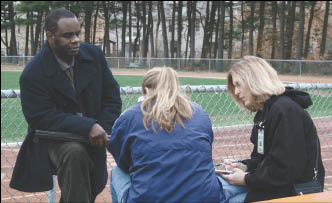Parsons Child & Family Center
Albany, N.Y.
(518) 429-2391
http://www.parsonscenter.org/services/ChildAdolescentMobileTeam.asp
 |
| Photo: Parsons Child and Family Center |
Objective: To provide a community-based response to individual child and adolescent crises.
In a Nutshell: Child Adolescent Mobile Crisis Team (CAMT) is a multidisciplinary team that responds to calls from service providers about children in crisis. The team provides telephone consultation and on-site intervention.
Where it Happens: CAMT was designed to fill an identified unmet need in the counties of Albany, Rensselaer and Schenectady: Children and adolescents in crisis situations were being unnecessarily treated in high levels of care that are more restrictive, intrusive and costly than other options. The CAMT responds to such crisis situations, with interventions taking place in a range of settings, such as the family home, schools, emergency rooms, community agencies, homeless shelters and street corners.
When it Began: February 2007, after two years of collaborative planning by families, two state agencies, three counties and two nonprofit agencies. These partners make up the steering committee that oversees the project.
Who Started it and Who Runs It: Parsons Child and Family Center, a 179-year-old multiservice provider that serves 9,000 youth annually, started the team and operates it with guidance from the steering committee. Project Director Richard Johnson and Supervisor Sharon Cohen oversee a staff that includes three clinical social workers, a behavioral specialist and a case manager who provides follow-up and links to community services.
Overcoming Obstacles: Two major problems were access to vehicles and recruitment of expert staff members for a pilot project that was not clearly permanent and that had evening shifts. The steering committee secured enough funding to attract skilled workers to staff a basic level of service – five shifts per week, from 1:30 p.m. to 9 p.m. CAMT got access to state vehicles from the New York Office of Mental Health.
What Still Gets in the Way: Access to the state cars is limited, and permanent cars will be needed to reach the goal of having a round-the-clock mobile team.
Cost: The operating budget for CAMT is $575,000.
Who Pays: The main funders are the New York Office of Mental Health ($291,000), the New York Office of Mental Retardation and Developmental Disabilities ($124,000), county appropriations (totaling $96,000) and the local United Way ($27,000).
Youth Served: From February 2007 through October 2008, CAMT received 551 calls regarding youths, who ranged in age from 4 to 20. At the times of the calls, 53 percent of the youths had received a mental health diagnosis. Mobile visits were provided in response to 68 percent of the calls, with the rest handled through phone consultations.
Youth Turn-On: “When an intervention is completed, they and their family feel safe and able to manage their own dynamics,” Cohen says.
Youth Turn-Off: “When we arrive, we are not initially welcomed,” Cohen says.





























